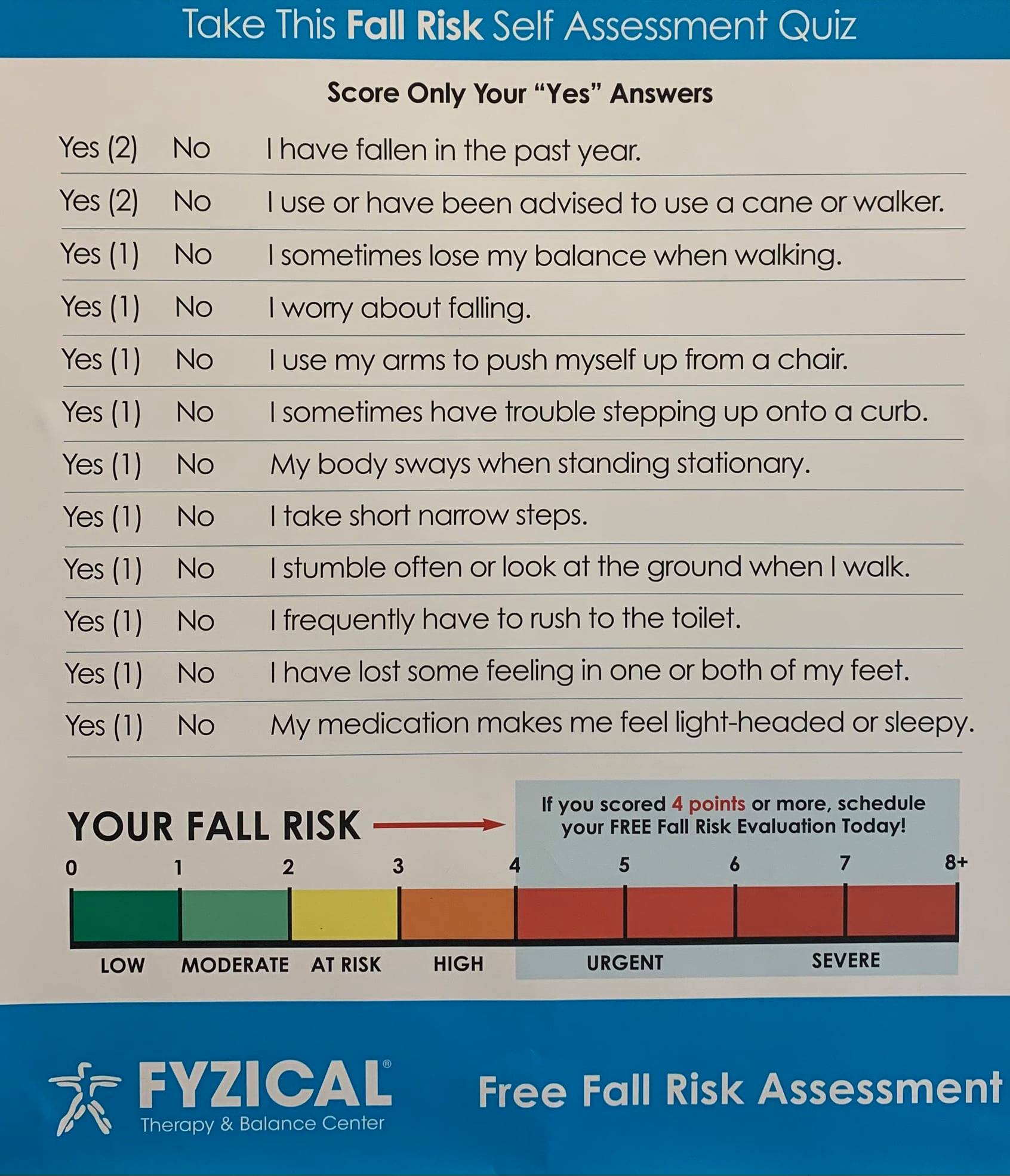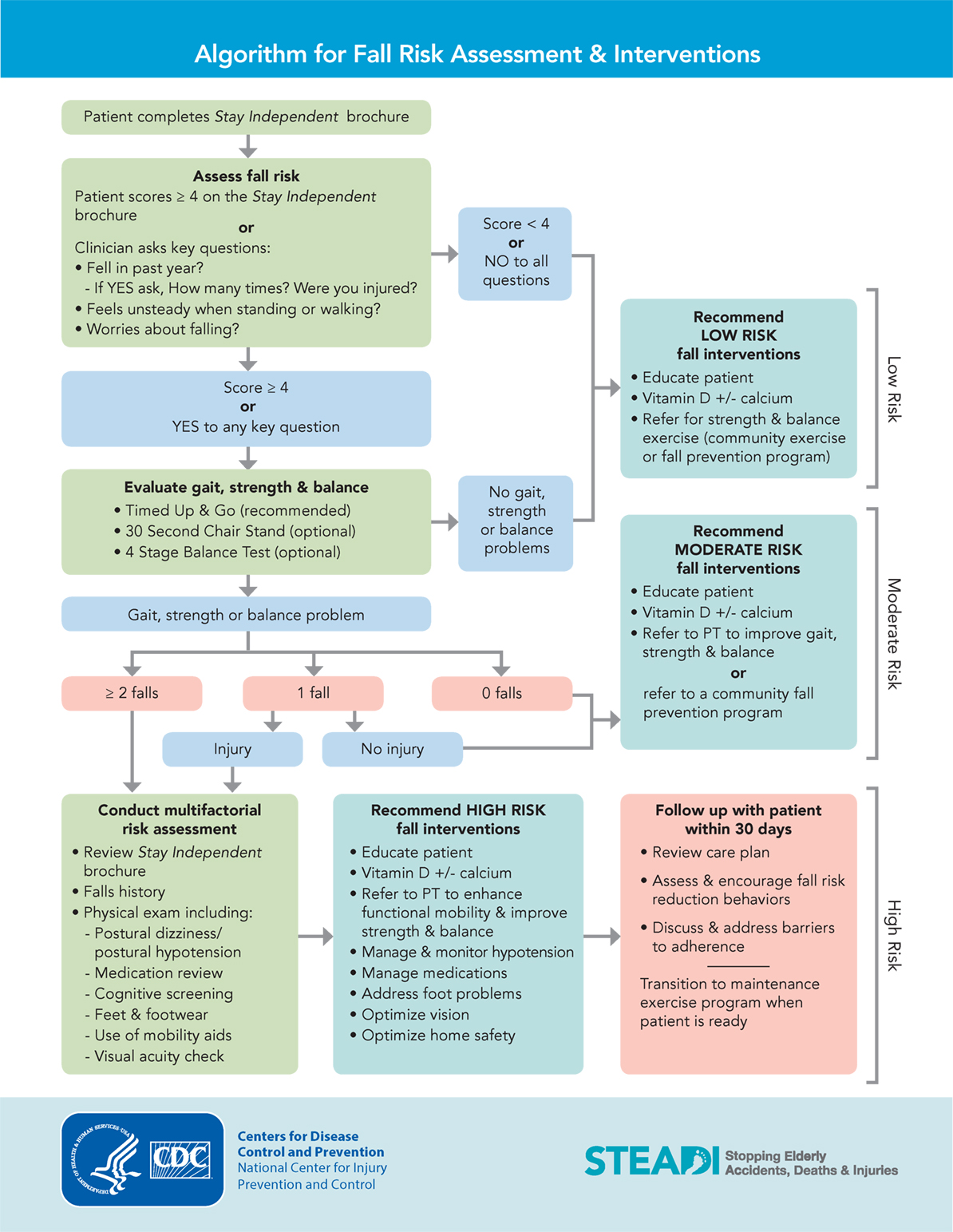The Buzz on Dementia Fall Risk
The Buzz on Dementia Fall Risk
Blog Article
How Dementia Fall Risk can Save You Time, Stress, and Money.
Table of ContentsThe Definitive Guide to Dementia Fall RiskDementia Fall Risk Can Be Fun For AnyoneDementia Fall Risk for BeginnersThe Ultimate Guide To Dementia Fall RiskDementia Fall Risk Can Be Fun For Anyone
Analyzing loss threat assists the whole healthcare group create a more secure setting for every individual. Guarantee that there is an assigned area in your clinical charting system where team can document/reference scores and record relevant notes associated with drop prevention. The Johns Hopkins Fall Threat Analysis Tool is one of many devices your team can make use of to assist avoid adverse clinical occasions.Individual falls in hospitals are common and devastating negative events that persist regardless of years of initiative to lessen them. Improving communication throughout the evaluating registered nurse, treatment team, patient, and client's most entailed loved ones might strengthen loss prevention efforts. A group at Brigham and Women's Health center in Boston, Massachusetts, sought to create a standard fall prevention program that focused around boosted communication and individual and family interaction.

The development group highlighted that successful implementation relies on individual and personnel buy-in, combination of the program into existing workflows, and integrity to program procedures. The group kept in mind that they are facing just how to ensure connection in program application during durations of situation. During the COVID-19 pandemic, as an example, a rise in inpatient drops was connected with restrictions in individual engagement together with restrictions on visitation.
The Definitive Guide to Dementia Fall Risk
These cases are typically considered avoidable. To execute the intervention, organizations need the following: Accessibility to Loss TIPS resources Fall pointers training and retraining for nursing and non-nursing team, including new nurses Nursing operations that permit for individual and family involvement to perform the falls evaluation, make certain usage of the avoidance plan, and conduct patient-level audits.
The outcomes can be extremely harmful, often accelerating client decline and creating longer healthcare facility keeps. One research estimated remains increased an added 12 in-patient days after a client fall. The Fall TIPS Program is based upon appealing clients and their family/loved ones across 3 major processes: analysis, personalized preventative treatments, and bookkeeping to make certain that patients are involved in the three-step loss avoidance process.
The person assessment is based upon the Morse Autumn Scale, which is a confirmed loss threat evaluation tool for in-patient health center settings. The scale includes the 6 most common factors patients in healthcare like this facilities drop: the individual autumn history, risky conditions (consisting of polypharmacy), usage of IVs and other external gadgets, mental status, gait, and mobility.
Each threat variable relate to several actionable evidence-based treatments. The registered nurse produces a strategy that incorporates next the treatments and shows up to the care group, person, and family members on a laminated poster or printed aesthetic help. Nurses establish the strategy while consulting with the individual and the patient's household.
Some Known Questions About Dementia Fall Risk.
The poster acts as a communication device with other members of the individual's care team. Dementia Fall Risk. The audit element of the program consists of assessing the patient's understanding of their risk aspects and avoidance plan at the system and health center degrees. Registered nurse champions perform a minimum of five private meetings a month with clients and their households to look for understanding of the loss avoidance strategy

A projected 30% of these drops outcome in injuries, which can range in extent. Unlike other damaging events that call for a standard clinical feedback, autumn avoidance depends highly on the demands of the individual.
Dementia Fall Risk Can Be Fun For Everyone

Based on auditing outcomes, one site had 86% compliance and 2 websites had over 95% conformity. A cost-benefit evaluation of the Fall ideas program in 8 healthcare facilities approximated that the program cost $0.88 per individual to implement and led to financial savings of $8,500 per 1000 patient-days in direct expenses connected to the prevention of 567 tips over 3 years and 8 months.
According to the development group, companies interested in carrying out the program needs to conduct a readiness evaluation and drops avoidance gaps analysis. 8 In addition, companies should guarantee the needed framework and workflows for implementation and establish an execution plan. If one exists, the organization's Autumn Avoidance Job Force should be associated with preparation.
The Buzz on Dementia Fall Risk
To start, companies need to make certain conclusion of training components by registered nurses and nursing aides - Dementia Fall Risk. Hospital team should assess, based upon the demands of a medical facility, whether to utilize an electronic health document hard copy or paper version of the fall prevention strategy. Carrying out teams need to hire and train registered nurse champions and establish procedures for auditing and coverage on autumn data
Team need to be involved in the procedure of revamping the process to involve people and family members in the analysis and avoidance strategy procedure. Equipment must be in area to ensure that devices can comprehend why a loss happened and remediate the reason. A lot more specifically, registered nurses should have networks to provide continuous feedback to both personnel and system leadership so they can readjust and improve autumn avoidance process and connect systemic problems.
Report this page